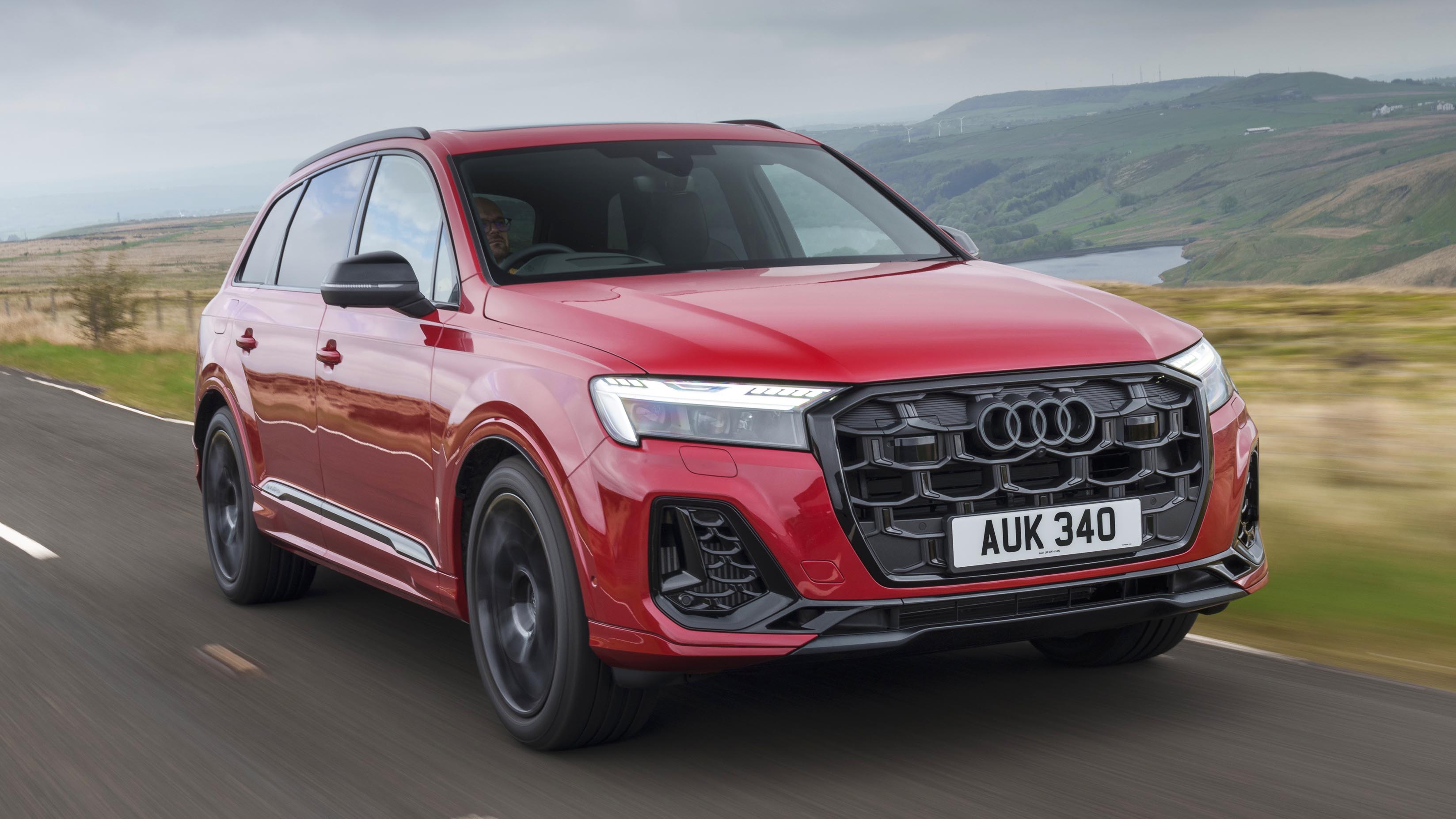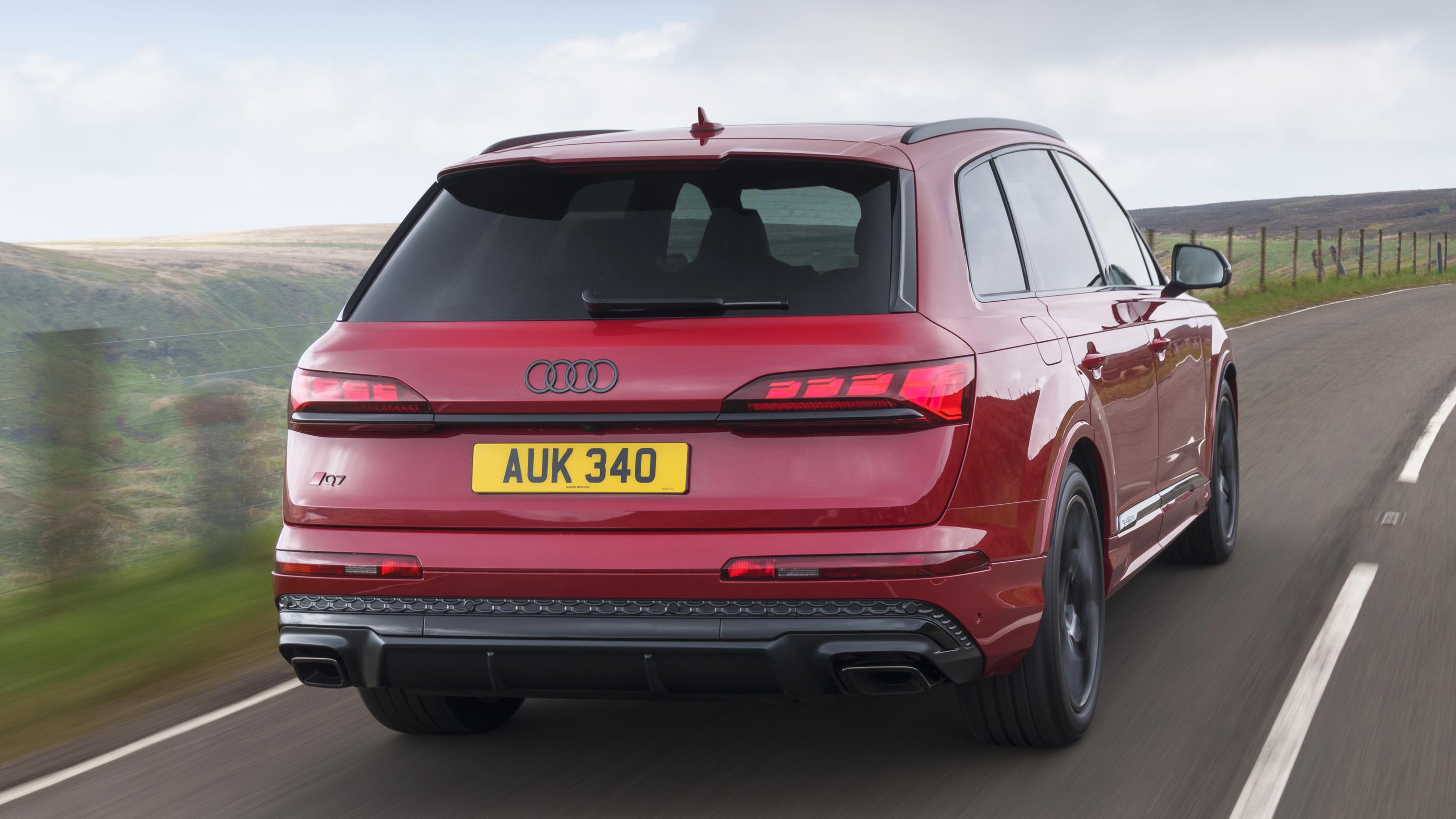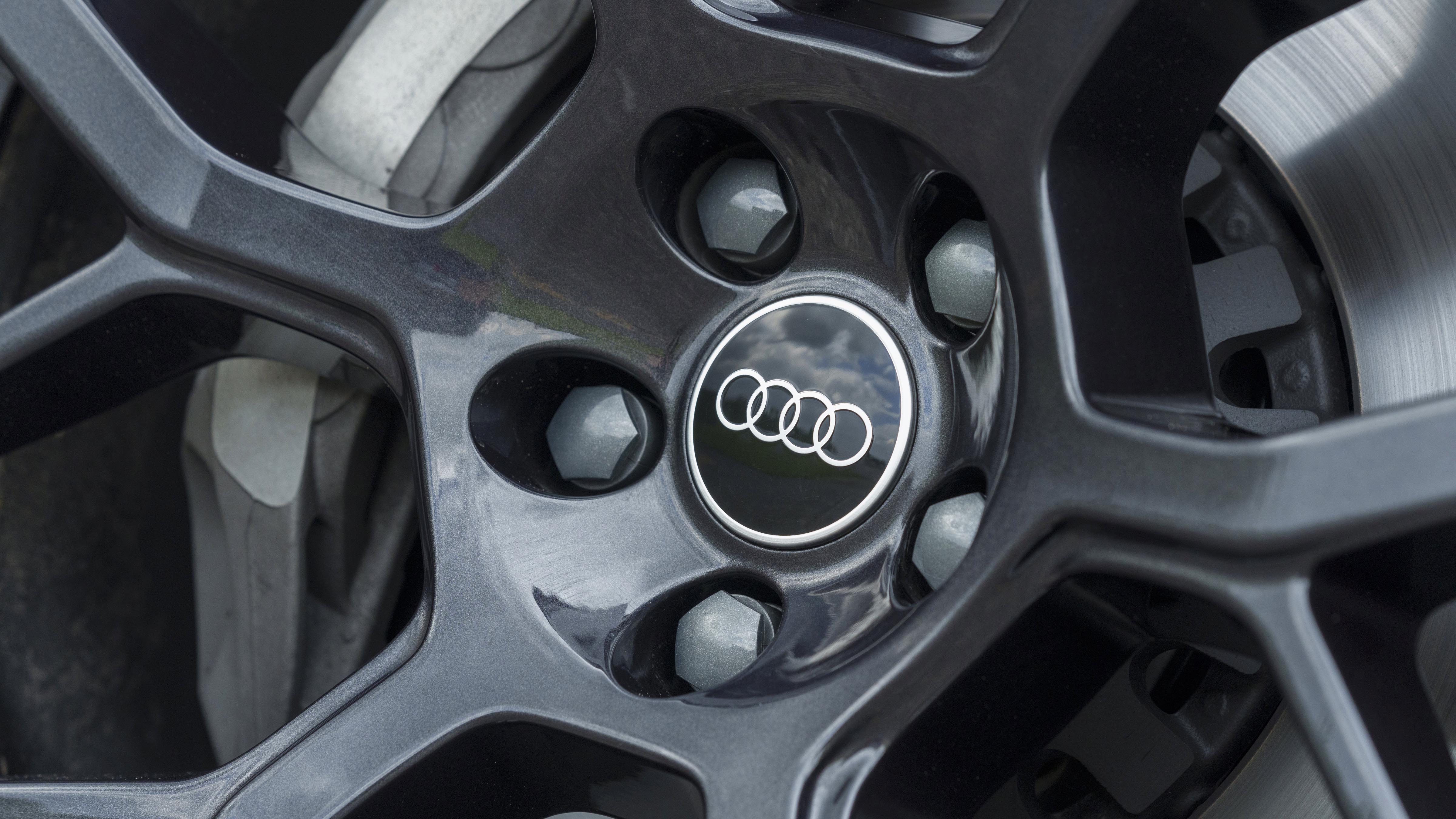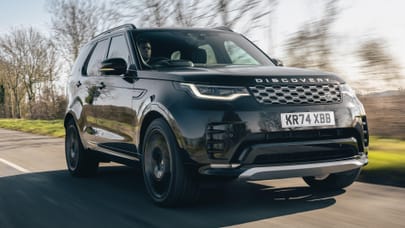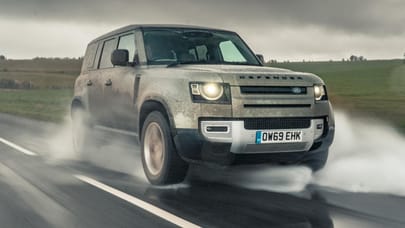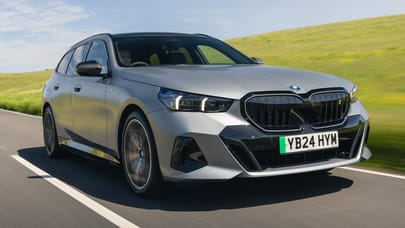
Good stuff
Practical luxury for up to seven. Three words: big, posh, box
Bad stuff
Handsome enough, but not exactly striking. PHEV only gets five seats
Overview
What is it?
You’re looking at Audi’s full-size, seven-seat SUV. The original Q7 first arrived way back in 2005, and that first-generation car soldiered on right the way through to 2015.
Looks like this second-gen iteration will live even longer though. First unveiled at the Detroit show in January 2015, it was given the usual mid-life facelift in 2020 that saw it get bits of big-brother Q8 grafted onto and into it. In 2024 Audi decided to facelift the second-gen Q7 for a second time. This time around it added customisable LED head and taillights, a slightly redesigned ‘singleframe’ grille and new colour options. It also stripped out all the chrome and added new alloy wheel designs. All of this points to the Q7 sticking around for a good while longer.
How are the looks actually different from before?
Good question. If you thought the 2020 updates were subtle then you’ll really struggle in a game of spot the difference in 2024. The Q7’s face is slightly redesigned and looks a little cleaner than before, while the headlight signature has flipped to put the daytime running lights up top. It’s an agreeable series of changes, but it does all contribute to Audi model identity confusion if you’re more than thirty feet away.
What are my trim options?
In the UK there’s S Line, Black Edition and top-of-the-tree Vorsprung trim levels to choose from, all gently lengthening the spec list as you walk your wallet up the pricing scale. All UK variants get standard air suspension and LED Matrix headlights (excellent).
And what about powertrains?
Engine options include a 55 TFSI petrol (a 3.0-litre V6 with 335bhp) and a pair of diesels in the same format with two outputs: the 45 TDI (228bhp and the cheapest of the Q7 powertrains) and the 50 TDI (282bhp). All are turbocharged 3.0-litre capacity V6s and all are combined with Audi’s efficiency-enhancing 48-volt mild-hybrid system. That goes with the only transmission option: an 8-speed Tiptronic auto driving through quattro four-wheel drive.
Let us not forget the plug-in hybrid 55 TFSI e too. That’s actually the most potent Q7 available these days (discounting the 500bhp V8-engined SQ7, of course) with the same 3.0-litre petrol-powered V6 connected to an electric motor for a combined 389bhp. The PHEV was given a bigger update compared to the rest of the range in 2024 too, meaning a new, more powerful 25.9kWh lithium-ion battery arrived to provide up to 52 miles of all-electric range.
As ever with Audi, there’s another Q7’s-worth of options on the go if you’re feeling flush, but the ‘Vorsprung’ spec (approx £87k as an ‘entry-level’ 45 TDI) tries really quite hard to aggregate it all into one handy Q-basket. Interestingly, Black Edition (£72k minimum) and Vorsprung editions get big wheels (21in and 22in, respectively) and lowered air ‘sports’ suspension – though quite why you’d want more ‘sports’ in a seven-seat SUV weighing well over two tonnes is beyond us. Smells a bit like marketing.
Anything else I need to know?
Just one key point that we should probably highlight here. If you do want the plug-in hybrid, you’ll have to make do with only five seats. Yep, the aforementioned battery lives under the boot floor and means there’s no space for a third row, so what you gain in eco credentials you lose in practicality.
Our choice from the range

What's the verdict?
As far as being a nicely-appointed seven-seat SUV with real practical appeal if you regularly haul multiples, the Q7 meets the brief. Although there’s your reason to avoid the PHEV straight away – the lack of practicality would be infuriating. The mild-hybrid versions without a battery pack eating up the rearmost two seats aren’t exactly revolutionary in terms of extracting interior space from a small footprint – they are, after all, over five metres long – but there aren’t too many seven-seat options if you also want plenty of posh to go with your space.
With decent but not class-leading dynamics, competitive pricing and super premium interiors, the Q7 should definitely be in the mix if you need this sort of thing. We’d be quite happy with the lower-powered diesel in S Line spec and a couple of options if it were our money, mind you. Does anyone really need self-closing doors and trick sports suspension on their family SUV?
The Rivals
Trending this week
- Long Term Review
Does the Audi S3 now finally deliver as a driver's car?




